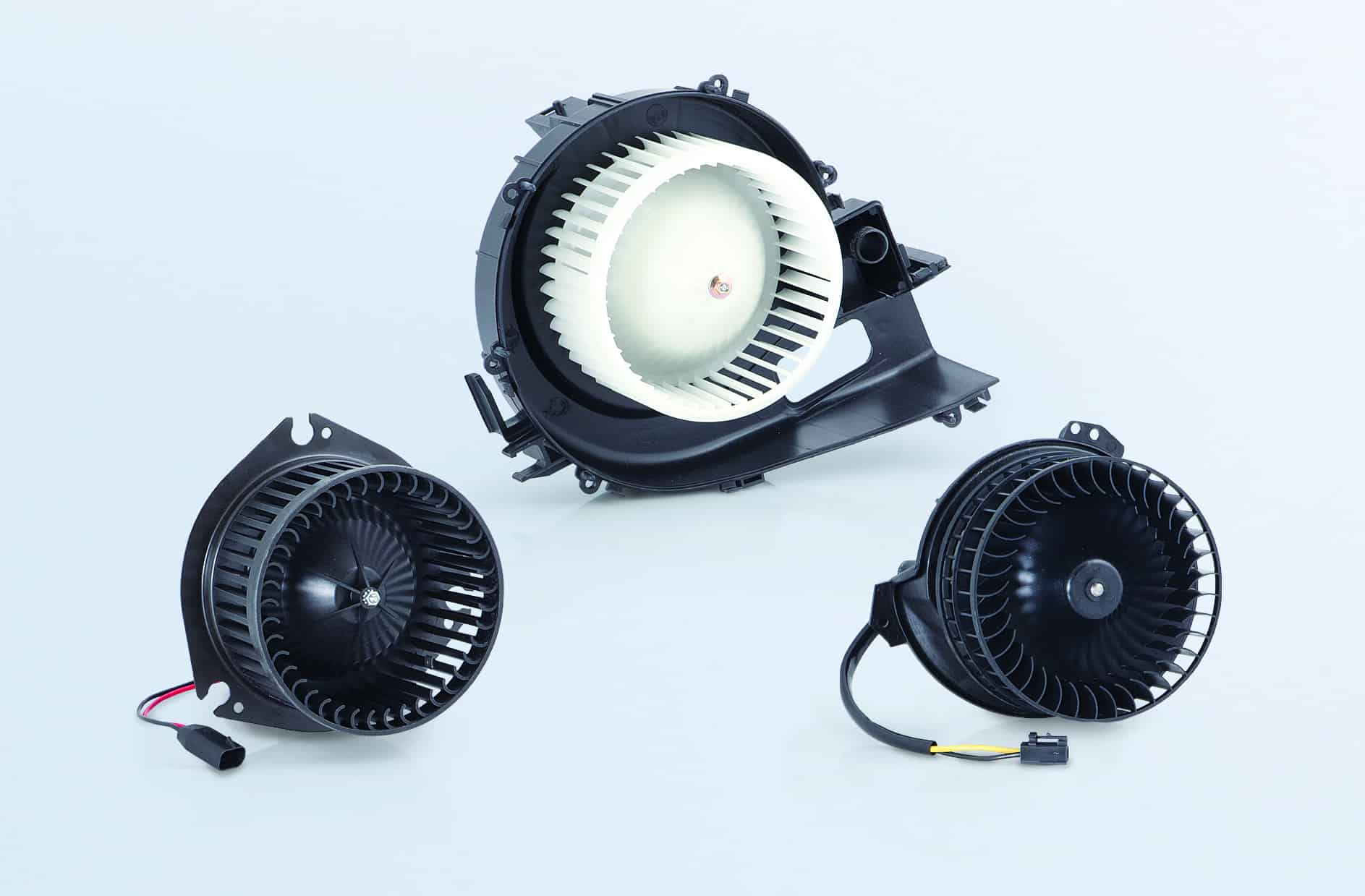Blower motors are essential to proper HVAC performance
The blower motor can make or break HVAC performance. Solid blower motor troubleshooting, along with an attention to detail, will help ensure that your customer’s HVAC system performs properly, the way the carmaker originally intended. When diagnosing HVAC issues, keep these tips in mind for successful blower motor repairs and satisfied customers:
Check out motor operation.
The lack of airflow may be an obvious clue to blower motor problems, but there are several other symptoms that can signal an issue. Keep an eye out for the following symptoms:
- Noisy motor – squealing or grinding
- Motor vibration
- Excessive heat on motor case
- Intermittent operation
- Burning odor from the motor
Get all the specs before ordering.
Once you diagnose the need for a new blower motor, make sure you get all the application information before you order the motor. Being prepared with the application information is the best way to ensure that you’ll get the right part, the first time. Aside from the basic year/make/model information, you’ll need to note if the vehicle has A/C, because the part may be different on vehicles without it. For the dual systems found on many SUVs and minivans, you need to specify front or rear application. In many cases, the mountings and electrical connections are different. Also, check for any pertinent manufacturer notes in the parts listing.
Look for additional problem areas.
Occasionally, it takes more than a new motor to restore “original” performance. But, a quick check of other HVAC system components can eliminate potential problems and increase your service opportunities. You should conduct a thorough inspection of the following components:
- Blower wheel – look for cracks or damaged fins.
- Thermostatic dashboard control unit – check operation.
- Fusible links – inspect condition.
- Heater core, heater hoses and clamps – check for leaks and loosening.
- Air recirculation ducts and doors – inspect the seals.
- Heater box – check for debris blocking ducts.
- Flexible corrugated ductwork – look for cracks or dry rot.
- Cabin fresh air filter (late models) – replace as needed.
Tech Tip courtesy of VDO Product Managers. For additional product information, please visit: www.vdo.com/usa, contact: salessupport-us@vdo.com or call 800-564-5066.

